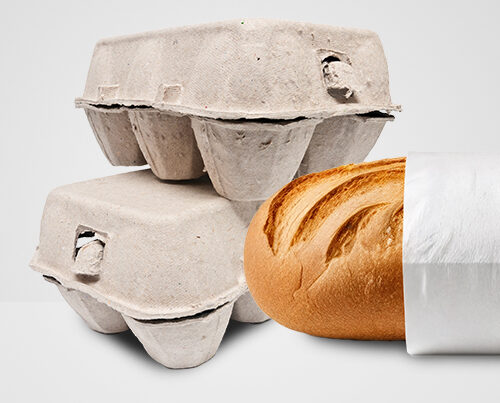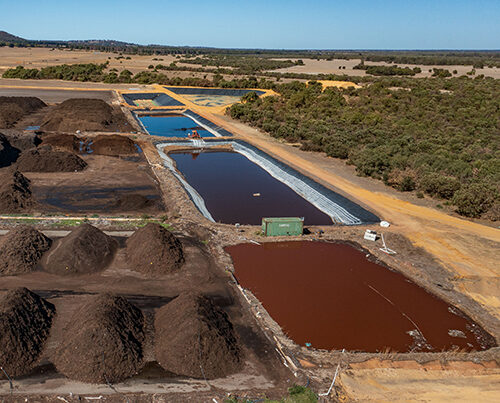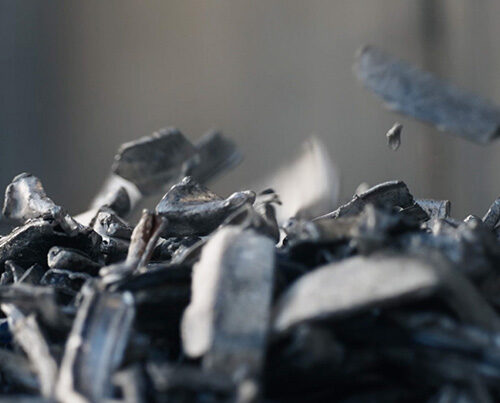The link between climate protection and recycling
Every Friday, schoolchildren from many Western countries skip school to demonstrate for more effective climate protection, an initiative begun by the Swedish climate activist Greta Thunberg. Looking at the slogans on the protest signs, these pupils obviously have a sense of humour as well. “There’s less hope for the future of our planet than there is for my maths final!” and “The Titanic wouldn’t have had a problem today!” are just two of the signs being held up. However, neither the ‘Fridays for Future’ movement nor the general public seem to be aware of the connection between climate protection and recycling. Many politicians do not seem to realise either just what a positive impact a systematic, well-functioning and resource-friendly circular economy can have on combatting climate change. REMONDIS has taken a closer look at the many studies and calculations that have been published recently, including those from the BMU [Federal Ministry for the Environment, Nature Conservation, Building and Nuclear Safety]. This information coupled with its own experience of materials recycling has led it to come up with a very promising theory. Besides the switch from fossil to renewable fuels (which is already ongoing) and the drive towards clean mobility, one of the biggest single measures for ensuring the Paris climate targets are met would be to introduce and systematically implement a landfill ban across Europe.
Current efforts to curb climate change are insufficient
In December 2015, the 195 countries attending the Paris Climate Conference voted to adopt a global, legally binding agreement to tackle climate change. The Paris Agreement builds on the plans set out in the Kyoto Protocol, which came into force in 2005 and aimed to create binding targets for greenhouse gas emissions in the industrial nations. The goal of the new global action plan signed in Paris is to keep a global temperature rise well below 2°C above pre-industrial levels to prevent the major damage that can be expected from climate change and reduce its impact.
If the results achieved in Germany from banning landfilling and promoting recycling were to be extrapolated to Europe or even the world, then climate change could be slowed down, if not halted.
Since the Paris Agreement, the majority of industrial nations have begun taking more or less substantial measures to reduce their carbon emissions. Right from the start, they have focused on the energy sector and the mobility sector. And yet the news that hit the headlines this June came as a real bombshell: “2050 climate targets rejected at EU summit.” Energy supply, which should be generated from wind, sun and biofuels rather than oil, coal and gas, would no longer be enough to reach the climate targets. Well insulated homes and efficient, low-emission e-mobility would not enable this promise to be kept either.
“Fighting global warming and environmental crises is the most urgent challenge of our time. Strengthening the circular economy is one of the most powerful tools in our arsenal. It will not only help achieve the Paris Agreement targets but also bring huge benefits for the economy and society.”
Werner Hoyer, President of the European Investment Bank Group
And where is the EU’s Circular Economy Package in all of this?
It would appear that, in their search for solutions, the EU has once again completely ignored the huge potential of recycling. Simply increasing the volumes of recycled raw materials used by industrial businesses from the present 15% to 30% in Germany alone would reduce CO2 emissions by 60 million tonnes, the equivalent of approx. one third of the potential of renewable energy.
Recycling still plays a minor role in the climate debate.
If humanity wishes to make sure that global temperatures have not risen by more than 1.5°C by 2050, then carbon emissions may not exceed 420 gigatonnes during this period. Looking at current emission levels and the lack of speed that climate protection measures are being implemented, this budget will have been used up in just ten years’ time. The EU Commission’s Circular Economy Action Plan and its legislative proposals regarding the handling of waste are promising and certainly seem to be heading in the right direction.
Climate change: a few facts & figures
Having looked at the empirical evidence, the overwhelming majority of scientists agree that the rising temperatures and the catastrophic consequences this brings with it are man-made. This has been proven in a number of ways, including analysing ice cores from the Antarctic and Greenland. The following takes a more detailed look at the facts:
- Atmospheric CO2 concentrations before industrial emissions began: 260 to 280 ppm (parts per million); by and large, these concentration levels remained stable in the 10,000-year period before the Industrial Revolution
Measurements taken since 1850 show concentration levels have been rising at an ever faster rate - Atmospheric CO2 concentrations reached 400 ppm for the first time in March 2015; this figure was 412 ppm in 2019 – i.e. 40% above the pre-industrial level and 33% above the highest CO2 level ever reached in the past 800,000 years
- The amount of CO2 emitted by volcanoes is less than 1% of that produced by humans
- Annual increase between 2000 and 2009: 2 ppm
- Global rise in temperature since the beginning of the industrial age: 1.1°C; no other period of warming has been as fast as this over the last 66 million years
- The 20 warmest years since records began have been in the last 22 years; the four warmest years on record (in descending order): 2016, 2015, 2017 and 2018
- Expected rise in temperature caused by man-made emissions by the end of the 21st Century = 4 – 5°C; the only comparable period over the last 10,000 years is the postglacial temperature increase
- The speed of global warming is ca. 100 times greater than was the case with naturally occurring climate changes in the past
Where we should be heading
The key elements of the revised waste proposal for the European Union include
- Recycling 65% of municipal waste by 2030
- Recycling 75% of packaging waste by 2030
- Reducing the landfilling of waste to a maximum 10% of municipal waste by 2030
- Banning the landfill of separately collected waste and promoting economic instruments to discourage landfilling
Besides increasing recycling rates, the EU Commission has taken a critical look at landfilling for the very first time.
Emission sources in waste management in 2016
(excluding CO2 from biomass)
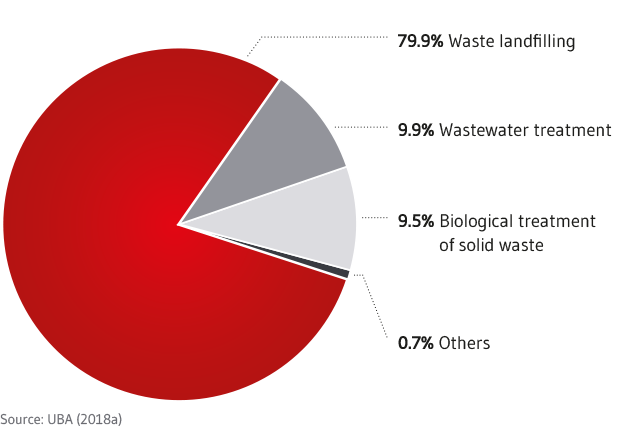
How exactly can a landfill ban help prevent climate change?
The article, “Methan – die unterschätzte Gefahr” [Methane – an underrated risk], appeared in the German magazine, DER SPIEGEL, on 06 June this year. It quotes two climate research scientists from the National Institute of Water and Atmospheric Research in Wellington, New Zealand, who conclude that there is a distinct lack of public awareness regarding methane emissions. This is particularly surprising as this trace gas is 25 times more harmful for the climate than carbon dioxide and its concentration in the atmosphere is rising rapidly. According to the scientists, methane emissions are caused by any process that involves the decomposition of organic material in an airtight environment such as large-scale animal husbandry, forestry and sewage treatment plants. The study also specifically mentions landfills as being a major source of methane.
Methane is 25 times more damaging than CO2 making it the most potent greenhouse gas.
Methane also plays a major role in the latest analysis published by the Intergovernmental Panel on Climate Change (IPCC), which looks at the chances of being able to restrict climate change to 1.5°C above pre-industrial levels in the period running up to 2100. The report concludes that the volumes of methane in the atmosphere must sink by 35% between 2010 and 2050 if the climate goal is to be achieved.
Emissions development in waste management and other**
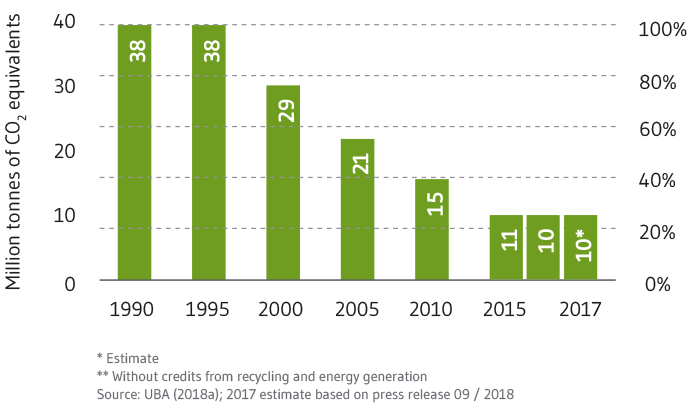
How much CO2 can be saved by a European TASi?
And this is precisely where the circular economy has a role to play as a ban on landfilling waste with organic content would prevent significant volumes of the climate-damaging gas methane being produced in the first place. One of Germany’s laws is a perfect example of what can be achieved in this area, namely the ‘TASi’ [Technical Directive on the Recycling, Treatment and Disposal of Municipal Waste], which came into force in 2005. While the law’s original aim was to promote materials recycling rather than to reduce greenhouse gases, this wished-for side-effect has been well documented. The BMU has put a concrete figure on the positive impact of materials recycling and the landfill ban in its status analysis “Abfallwirtschaft in Deutschland 2018” [The waste management economy in Germany 2018]. It reveals that this law has led to the annual emissions of carbon dioxide equivalents generated by the waste management sector falling by around 56 million tonnes since 1990. A carbon dioxide equivalent describes the global warming potential of a greenhouse gas in comparison with that of carbon dioxide. More than 20% of the Kyoto targets promised by Germany were reached as a result of this reduction.

EU target for the re-use and recycling of household waste by 2025.
Huge contributions being made by the recycling sector
Furthermore, the German government’s latest ‘National Inventory Report for the German Greenhouse Gas Inventory’ establishes that greenhouse gas emissions across the country dropped by around 350 million tonnes of CO2 equivalents between 1990 and 2015. It states that the biggest reduction by far – namely 67% – can be put down to the waste management sector, primarily as a result of the TASi (landfill ban) coming into force in 2005. Today, the German waste management sector causes just 1% of all emissions in Germany – a figure that continues to fall.
Were this to be extrapolated to Europe, then the following could be surmised: assuming that the average volume of waste generated in the European member states is 482kg per capita and the number of inhabitants 513 million, then a systematically enforced landfill ban and recycling obligation across Europe would also reduce emissions of climate-damaging gases by 67% compared to the levels in 1990. Apart from the transition to renewable energy (for the mobility sector as well), this would be the biggest single measure for cutting greenhouse gases. While municipal waste only makes up around 10% of all wastes generated, it contains a disproportionately high amount of organic material and it is this material that emits methane in landfills during the decomposition process. As methane is 25 times more damaging to the climate than CO2, a ban on landfilling would have a correspondingly high impact on preventing climate change. Just imagine what could be achieved if there were a global landfill ban and all raw materials were recovered for reuse. The Paris Agreement would be met. Climate change could be halted.
Day by day, REMONDIS shows that this theory really can be put into practice. The company’s Lippe Plant alone cuts emissions by just under half a million tonnes of CO2 equivalents every year – something that has been proven by independent analyses and certified in part by Klimaexpo NRW. And the Lippe Plant is just one of 800 recycling locations operated by REMONDIS worldwide.

EU target for landfilling municipal waste by 2035.
Quellen
- National Oceanic and Atmospheric Administration – NOAA
- Abfallwirtschaft in Deutschland 2018 | Fakten, Daten, Grafiken. (Federal Ministry for the Environment, Nature Conservation, Building and Nuclear Safety)
- Klimaschutz in Zahlen BMU (Federal Ministry for the Environment, Nature Conservation, Building and Nuclear Safety)
- Submission under the United Nations Framework Convention on Climate Change and the Kyoto Protocol 2019 – National Inventory Report for the German Greenhouse Gas Inventory 1990-2016 Author: German Environment Agency – UNFCC Submission www.umweltbundesamt.de/sites/default/files/medien/1410/publikationen/2018-05-24_climate-change_12-2018_nir_2018.pdf
- Study published by the University of Kassel on the impact of the circular economy on climate change.
www.uni-kassel.de/upress/online/frei/978-3-89958-910-8.volltext.frei.pdf - Klimaschutz: Methan – Die unterschätzte Gefahr. SPIEGEL ONLINE published on 06 June 2019
www.spiegel.de/wissenschaft/mensch/klimawandel-methan-die-unterschaetzte-gefahr-a-1271189.html - Das EU-Kreislaufwirtschaftspaket zwischen Visionen und Realitäten. Ella Stengler, ITAD
www.itad.de/mv/2018-06-04_stengler-das-eu-kreislaufwirtschaftspaketzwischen-visionen-und-realitaeten.pdf
Image credit: image 1: Adobe Stock: fovito








